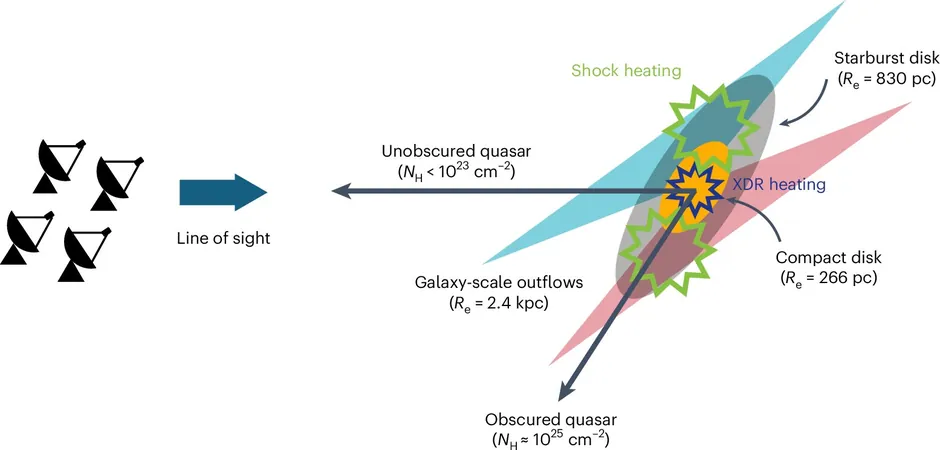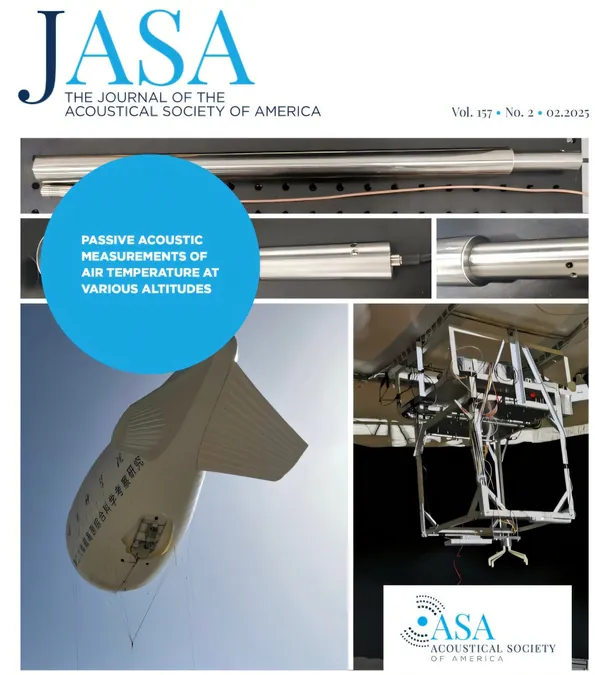
Breakthrough Discovery Unveils Hidden Black Holes: The Universe Has More Secrets Than We Thought!
2025-03-27
Author: John Tan
Introduction
In a groundbreaking study published in *Nature Astronomy*, an international team of scientists, including prominent researchers from The Australian National University (ANU), have made a stunning discovery: they have detected radio signals from hot gas encircling a supermassive black hole that existed a remarkable 12.9 billion years ago.
Significance of the Discovery
This captivating finding provides an unprecedented glimpse into the primordial universe, specifically showcasing the conditions surrounding a rapidly growing black hole from such a distant time. It opens new avenues for understanding how these cosmic giants evolved and the role they play in the universe's growth.
Research Leadership
Led by Professor Ken-ichi Tadaki of Hokkai-Gakuen University, the research utilized ultra-high-resolution observations to explore an environment surrounding a supermassive black hole with a mass over a billion times that of our Sun. The study’s insights affirm the hypothesis that many black holes remain obscured behind clouds of dust and gas, yet can potentially be revealed using this innovative observational method.
Expert Insights
Dr. Takafumi Tsukui, a co-author of the study from ANU, emphasized the significance of these findings for our comprehension of black holes in the early universe. “This research illuminates how black holes develop from minuscule seeds in the universe’s infancy into the supermassive entities we observe today,” he stated. “It appears that a multitude of supermassive black holes might be hiding in dusty regions, just waiting to be discovered.”
Power of Supermassive Black Holes
Supermassive black holes harness immense energy as they consume surrounding matter. This process powers quasars, recognized as some of the brightest celestial objects we can observe. However, despite their luminosity, investigating the central regions of distant quasars has proven to be a formidable challenge for astronomers.
Innovative Observational Techniques
Using the Atacama Large Millimeter Array (ALMA) telescope's exceptional resolution, the research team has for the first time detailed the heating mechanisms at play within hundreds of light years of a black hole. These observations reveal the extreme conditions near these cosmic giants, suggesting that high-energy X-ray radiation generated by matter spiraling into a black hole, along with vigorous winds and shock waves, heats the surrounding gas to levels significantly higher than those usually witnessed in typical galactic environments, where the primary energy source is star-emitted ultraviolet radiation.
Methodology
The groundbreaking technique involves tracking radio waves emitted from carbon monoxide (CO) molecules in excited states, which uniquely captures the thermal dynamics of the gas adjacent to the supermassive black hole. Dr. Tsukui mentioned, “The radio waves we observed via ALMA are not easily absorbed by dust, so this approach proves to be a powerful tool to uncover masked supermassive black holes.”
Future Research
Armed with this new method, the researchers intend to apply similar high-resolution observations to other celestial objects, expecting to build a more profound understanding of the early universe's supermassive black holes and their formation and evolution. The cosmic narrative may radically shift as we discover that the universe holds more hidden treasures than we ever imagined. Stay tuned for further revelations that could change everything we know about black holes!





 Brasil (PT)
Brasil (PT)
 Canada (EN)
Canada (EN)
 Chile (ES)
Chile (ES)
 Česko (CS)
Česko (CS)
 대한민국 (KO)
대한민국 (KO)
 España (ES)
España (ES)
 France (FR)
France (FR)
 Hong Kong (EN)
Hong Kong (EN)
 Italia (IT)
Italia (IT)
 日本 (JA)
日本 (JA)
 Magyarország (HU)
Magyarország (HU)
 Norge (NO)
Norge (NO)
 Polska (PL)
Polska (PL)
 Schweiz (DE)
Schweiz (DE)
 Singapore (EN)
Singapore (EN)
 Sverige (SV)
Sverige (SV)
 Suomi (FI)
Suomi (FI)
 Türkiye (TR)
Türkiye (TR)
 الإمارات العربية المتحدة (AR)
الإمارات العربية المتحدة (AR)